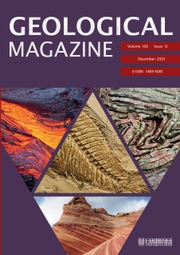Article contents
V.—Theoretical Remarks on the Gravel and Drift of the Fenlands
Published online by Cambridge University Press: 01 May 2009
Summary
1. The brown Boulder-clay corresponds with the brown Clay of the Eastern counties, and is oldest.
2. Then the hill gravel, the blue Boulder-clay, and perhaps the shell bed of March corresponds to the contorted drift.
3. As elevation progressed, the Fenlands would become one great fiord, ramifying at the Cambridge end up the southern valleys in the Chalk. First the coarse gravels of low levels were formed, and finally, during a long period—for the flints are wonderfully worn—the fine gravel of the plains. After which the country was elevated, and the sea denuded the superficial beds and retired. This corresponds to the Upper Boulder-clay and coarse gravel of the Norfolk section.
4. Now rivers cut their channels, and there commenced luxuriant vegetable growth, which corresponds with the excavation of the Mundesley river and the Mundesley peat.
5. Then a depression, during which was formed the Buttery-clay the Fens. This corresponds with the Upper Sands and Gravel of Mundesley.
6. And, finally, comes the second peat and the present state of nature.
I believe this succession is true for a far larger area than the Fenlands, perhaps for all Great Britain.
- Type
- Original Articles
- Information
- Copyright
- Copyright © Cambridge University Press 1866
- 1
- Cited by


